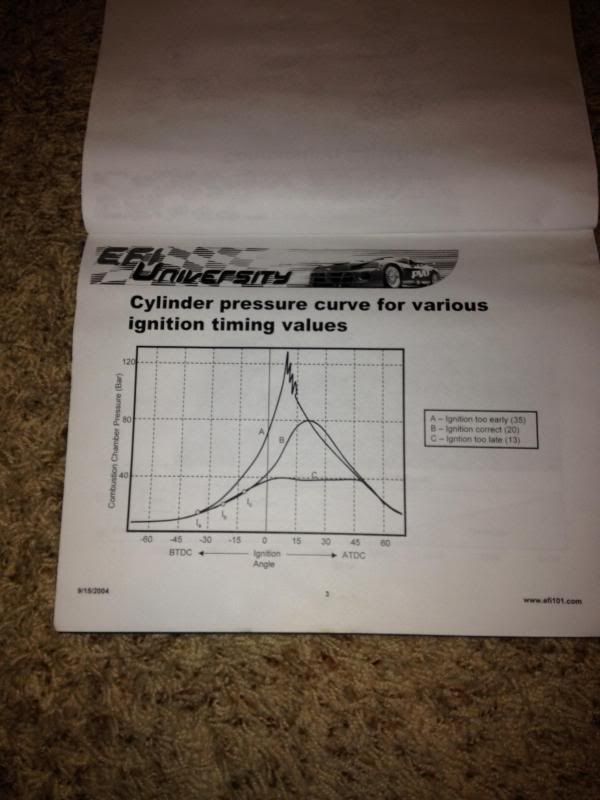All five categories I have played with

#1)
My most hated part of my lean burn engine. The leaner you go the more ignition advance you will have to run due to a slower lean A/F flame speed.

More ignition advance lowers efficiency due to the piston fighting high cylinder pressure before TDC.

This becomes even more of a problem when running a lean burn engine during light load conditions. At light load you are making very low power, and the effects are much much greater on power out-put by percent.
Back to my first problem... running to much ignition advance knowing the engines efficiency is suffering from it? So I add fuel to increase flame speed. Add fuel power goes up, "what... I don't need any more power", that's why I did all those aero mods to run less power at light load??? So I'll fix that by less throttle pedal. But now I increased engine vacuum so I just increased pumping losses. Crap!!!! Plus decreased flame speed due to partial throttle, so my ignition advance needs to go back up.

#2) is my solution, "turbo charge my N/A engine". Lean burn engines want more ignition advance and thus decrease engine efficiency, but I can offset some of that by utilizing number two.

At light load I can run at zero vacuum or at freeway speeds and a positive boost of around 2 psi. Pumping loses are improve drastically and flame speed is back where it needs to be so I can run less ignition.
#3) I need to add turbulence. This is part of my intake port runner design to feed air and fuel to the top of the port across the exhaust valves and tumble downward over the top of the piston and back toward the intake valves.
#4) Add heat to increase flame speed. At light load my turbo compound system runs with no inter-cooler. IAT temps are 200*F or more. Lean burn helps also with this due to a lower fuel endothermic reaction.
#5) now hang because this is where it gets a little strange. Last year I did testing at light load lean burn using Nitrous-Oxide to increase flame speed. It work awesome!!! I was running as little as 5* BTDC advance with no miss fire and no eternal damage. Keep in mind the amount of N2O was equal to a N2O solenoid leak. Around 2.52 lbs/hr of N2O. Not cost effective ($3.25 a lb. my cost) but interesting to say the least. lol